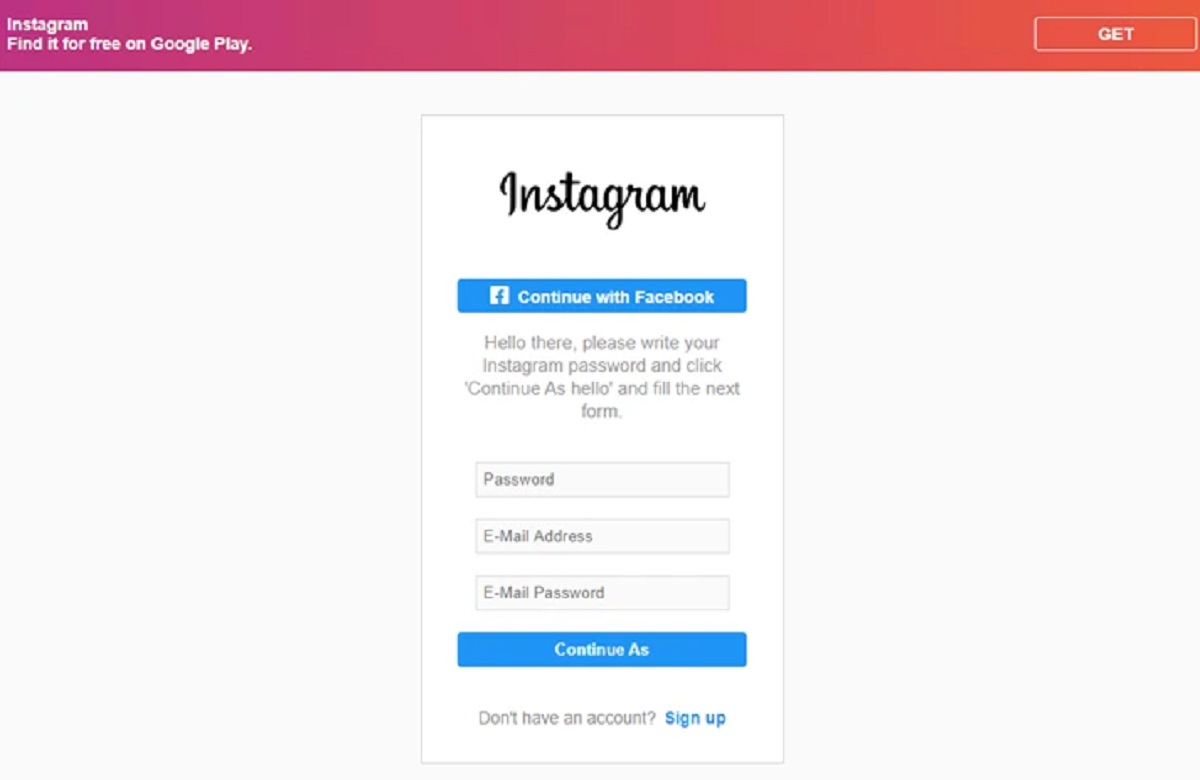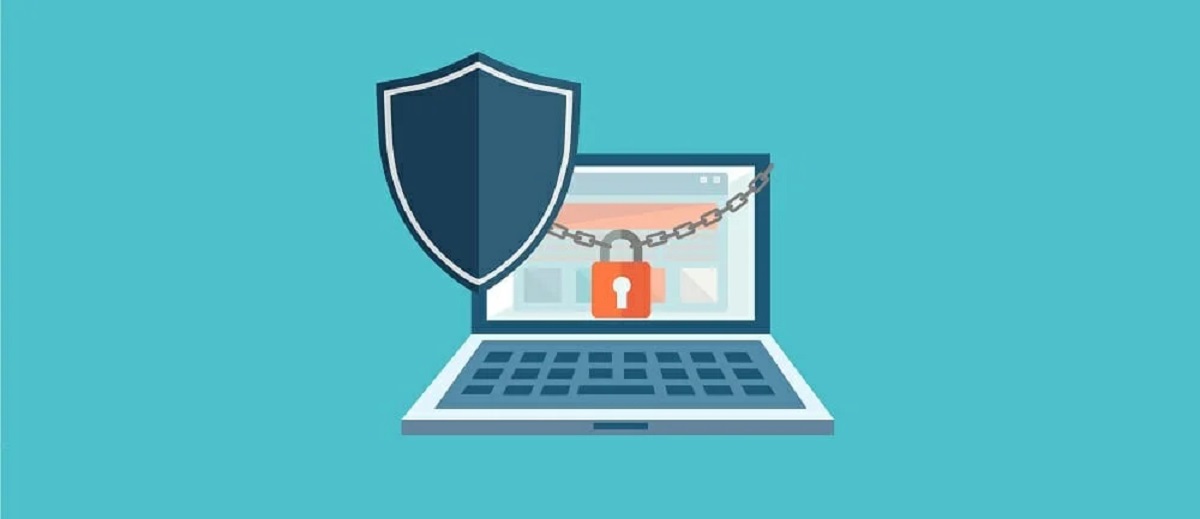Introduction
Welcome to the world of computer security, where threats lurk around every corner. One of the most common dangers users face is fake antivirus programs, which pose as legitimate software but are actually malicious tools designed to scam or harm unsuspecting victims.
A fake antivirus, also known as rogue antivirus or scareware, is a type of malicious software that disguises itself as a legitimate antivirus program. Its main goal is to trick users into believing that their computer is infected with malware and convince them to purchase a full version of the fake software to remove the supposed threats.
These fraudulent programs have become increasingly sophisticated over the years, making it challenging for users to identify them. In this article, we will delve into the world of fake antivirus programs, exploring how they work, the signs to look out for, the dangers they pose, as well as strategies to avoid falling victim to these scams.
Whether you’re a casual computer user or an IT professional, understanding the threat of fake antivirus programs is crucial in safeguarding your sensitive information and keeping your digital assets secure. So, let’s dive in and explore this intriguing world of cyber deception.
Definition of a Fake Antivirus
A fake antivirus program is a type of malicious software that masquerades as a legitimate antivirus program to deceive users. These rogue programs often have convincing interfaces and logos, mimicking well-known antivirus brands to appear trustworthy. However, their true purpose is far from protecting your computer.
The primary objective of a fake antivirus is to exploit users’ fears about malware infections and trick them into purchasing a full version of the software. To achieve this, the fake program generates false security alerts and pop-up messages claiming that the user’s computer is infected with viruses or other malware. It may even display fake scan results, showing a long list of nonexistent threats to further panic the user.
Once the user becomes convinced of the supposed infections, the fake antivirus prompts them to buy a license or make a payment to remove the threats. However, even if the user falls for the scam and makes the payment, the fake program rarely delivers any legitimate antivirus protection or resolves the reported issues. Instead, the user ends up with a compromised system and financial loss.
It is essential to note that a fake antivirus can be distributed through various methods, including malicious websites, email attachments, or bundled with legitimate software. Cybercriminals continuously adapt and evolve their techniques, making it crucial for users to stay vigilant and informed about the latest threats.
Now that we have a clear understanding of what a fake antivirus is, let’s delve deeper into how these deceptive programs operate and the signs to watch out for.
How Does a Fake Antivirus Work?
Understanding how a fake antivirus works is key to recognizing and avoiding these deceptive programs. Fake antivirus programs employ various tactics to trick and manipulate users, ultimately leading them to purchase the software or divulge sensitive information. Here are the primary ways in which these malicious programs operate:
1. Social Engineering: Fake antivirus programs rely heavily on social engineering techniques to exploit users’ trust and fear. They use convincing interfaces, professional-looking logos, and sophisticated marketing strategies to make users believe that they are reputable antivirus software. By utilizing psychological tactics, such as urgency and fear, these programs persuade users to take immediate action.
2. False Scanning Results and Alerts: Once installed, a fake antivirus performs a scan that often produces exaggerated or completely fabricated results. This includes identifying numerous malware infections, even on a clean system. The program bombards the user with terrifying alerts, warning of the severe consequences if the reported threats are not dealt with quickly.
3. Continuous Pop-ups and Warnings: Fake antivirus programs inundate users with persistent pop-up messages and warnings. These alerts may mimic legitimate antivirus notifications, informing the user about virus detections, system vulnerabilities, or expired licenses. The goal is to create a sense of urgency and panic, compelling users to take immediate action.
4. System Hijacking: Some fake antivirus programs go a step further and hijack the user’s system. They may disable legitimate antivirus software, block access to security websites, or prevent the installation of genuine security updates. By taking control of the system, these programs exert further influence and make it challenging for users to seek real help or alternative solutions.
5. Fake Support and Technical Assistance: To enhance credibility, certain fake antivirus programs offer support services or technical assistance. Users who encounter difficulties or have questions are prompted to contact a supposed support team. However, these support channels are manned by cybercriminals who continue the scam by providing misleading information or requesting remote access to the user’s machine.
Fake antivirus programs exploit users’ fear of malware infections and rely on their lack of knowledge or confusion about legitimate security software. By understanding how these programs operate, users can remain vigilant and make informed decisions to protect their systems and data.
Signs of a Fake Antivirus
Recognizing the signs of a fake antivirus program can help users avoid falling victim to these deceptive scams. While these malicious programs are designed to be convincing, there are several red flags to watch out for. Here are some common signs that indicate the presence of a fake antivirus:
1. Unexpected Pop-ups: If you start seeing pop-up windows displaying alarming security alerts or scan results out of nowhere, especially if you haven’t initiated a scan or installed any antivirus software, it could be a sign of a fake antivirus program.
2. Aggressive and Fearful Messages: Fake antivirus programs often use fear tactics to frighten users into believing their system is severely infected. If you receive aggressive warnings or messages claiming that your computer is at risk and demanding immediate action, be suspicious.
3. Unverified Sources: Be cautious when downloading and installing antivirus software from unofficial sources. Stick to reputable websites or the official websites of trusted antivirus vendors. Downloading from unknown or untrusted sources significantly increases the risk of inadvertently installing a fake antivirus program.
4. Poor Grammar and Spelling: Fake antivirus programs are often created by cybercriminals who may not have a strong command of the language used by legitimate antivirus vendors. Look out for poor grammar, spelling mistakes, or incorrect language usage in the program’s interface and messages.
5. High-pressure Sales Tactics: Fake antivirus programs employ aggressive sales tactics to convince users to make an immediate purchase. Keep in mind that legitimate antivirus vendors do not resort to such tactics. If you feel pressured to buy the software or provide personal and financial information, it’s likely a fake antivirus.
6. Limited or Nonexistent Company Information: Legitimate antivirus vendors have established reputations, and their company information is readily available. If you cannot find any legitimate information or contact details about the antivirus program’s company, it is likely a fake program.
7. Disabling Legitimate Antivirus Software: Fake antivirus programs often attempt to disable legitimate security software to prevent detection and removal. If you notice that your previously installed antivirus solution suddenly becomes disabled or experiences frequent errors, it could be a sign of a fake antivirus program actively working against it.
It’s important to note that these signs are not definitive proof of a fake antivirus program. However, if you encounter one or more of these indications, it is best to err on the side of caution and thoroughly investigate before taking any further action.
Now that we have identified the signs of a fake antivirus program, let’s explore the dangers associated with these malicious programs and the potential risks they pose to users and their systems.
Dangers of Fake Antivirus Programs
Fake antivirus programs may seem harmless at first glance, but they pose significant dangers to users and their systems. Falling victim to these scams can have severe consequences. Here are some of the dangers associated with fake antivirus programs:
1. Financial Loss: One of the most immediate dangers of fake antivirus programs is the risk of financial loss. These scams thrive on convincing users to purchase the full version of the fake software, often at exorbitant prices. However, even if users make the payment, they usually receive no legitimate antivirus protection in return, resulting in both a loss of money and a false sense of security.
2. Identity Theft: Fake antivirus programs may attempt to collect personally identifiable information (PII) or financial data from unsuspecting users. This information can be used for identity theft, fraud, or sold on the dark web to other malicious actors. Users who fall victim to fake antivirus scams may find their personal and financial information compromised, leading to potential financial ruin and other adverse consequences.
3. System Damage: Some fake antivirus programs are not just scams but actively harmful to a user’s system. They may contain malicious code or perform actions that can damage files, corrupt operating systems, or disrupt essential system functions. Users may experience system crashes, loss of data, or other detrimental effects as a result of installing and running a fake antivirus program.
4. Unauthorized Access: In some cases, fake antivirus programs may grant remote access to cybercriminals. These scammers can then infiltrate the user’s system, install additional malware, or exploit the compromised system for further illicit activities. Once infiltrated, these cybercriminals can gain control over sensitive data, compromise privacy, and cause long-lasting harm.
5. Loss of Productivity and Resources: Fake antivirus programs can consume system resources, slow down computer performance, and disrupt normal activities and workflows. Users may experience crashes, freezes, or sluggishness due to the fraudulent software’s resource-intensive operations. This can result in reduced productivity, frustration, and the need for additional time and effort to restore the system to its optimal state.
6. Compromised Cybersecurity: By installing fake antivirus programs, users unknowingly compromise their own cybersecurity defenses. These programs are ineffective in detecting and removing real threats, leaving the system vulnerable to actual malware infections. Additionally, the fake antivirus may disable legitimate security software, further exposing the system to potential risks.
It is crucial to understand the dangers associated with fake antivirus programs to take appropriate measures to protect against them. In the next section, we will discuss strategies and best practices for avoiding fake antivirus programs and keeping your system secure.
How to Avoid Fake Antivirus Programs
Preventing fake antivirus programs from infiltrating your system is essential for maintaining a secure computing environment. By following these best practices, you can significantly reduce the risk of falling victim to these deceptive scams:
1. Stick to Reputable Sources: Download antivirus software only from official websites or trusted sources. Avoid downloading software from unknown or third-party websites, as they are more likely to distribute fake antivirus programs or bundle them with legitimate software.
2. Research Before Downloading: Before downloading any antivirus software, conduct thorough research to ensure that the program and the company behind it are legitimate. Read reviews, check user ratings, and look for independent verification to confirm the software’s authenticity.
3. Beware of Pop-up Messages: Be cautious of unexpected or unsolicited pop-up messages claiming that your computer is infected or at risk. Legitimate antivirus software does not typically use aggressive pop-ups to deliver important security alerts. Close any suspicious pop-ups immediately without clicking on them.
4. Use a Reliable Antivirus Program: Install and keep up-to-date a reputable and reliable antivirus program from a trusted vendor. Ensure that your antivirus software has real-time scanning capabilities, automatic updates, and a robust malware detection and removal system. Regularly scan your system to detect and eliminate any potential threats.
5. Enable Firewall Protection: Activate the built-in firewall on your operating system or use a reliable third-party firewall to add an extra layer of security. A firewall helps to block unauthorized access attempts and prevents malicious software from communicating with the internet.
6. Keep Your Operating System and Software Updated: Regularly update your operating system, web browsers, and other software to the latest versions. These updates often include important security patches that help safeguard against known vulnerabilities that fake antivirus programs may exploit.
7. Be Skeptical of Unsolicited Support Calls: Be wary of unsolicited phone calls claiming to be from support representatives offering assistance with your computer. Legitimate antivirus vendors do not make unsolicited calls. If you receive such a call, hang up and do not provide any personal or financial information.
8. Educate Yourself: Stay informed about the latest cybersecurity threats and scams, including the tactics used by fake antivirus programs. Regularly read security blogs, subscribe to reputable industry newsletters, and follow security experts to stay abreast of the evolving threat landscape.
9. Practice Safe Browsing Habits: Avoid visiting suspicious or untrustworthy websites, especially those known for distributing malware or promoting fake software. Be cautious of clicking on unknown links in emails, social media messages, or instant messages, as they may lead to malicious websites or initiate downloads of fake antivirus programs.
10. Trust Your Instincts: If something seems too good to be true or raises suspicion, trust your instincts and exercise caution. If a software offer or a security alert appears fishy or overly aggressive, it is better to err on the side of caution and investigate further before taking any action.
By following these proactive measures and staying vigilant, you can minimize the risk of encountering fake antivirus programs and protect yourself from their deceptive practices.
What to Do If You Encounter a Fake Antivirus
Encountering a fake antivirus program can be a stressful experience, but it’s important to remain calm and take appropriate actions to protect your system and personal information. Here are the steps you should follow if you encounter a fake antivirus:
1. Do Not Interact: Refrain from clicking on any pop-ups, alerts, or messages displayed by the fake antivirus program. Do not provide any personal or financial information, as this can lead to identity theft or financial fraud.
2. Disconnect from the Internet: If you suspect that your computer is infected with a fake antivirus program, immediately disconnect from the internet. Unplugging the ethernet cable or disabling Wi-Fi will help prevent the program from communicating with remote servers and minimize potential damage.
3. Close the Program: Close the fake antivirus program by using the Task Manager or Force Quit on Mac to terminate the process. Avoid clicking on any buttons or prompts within the program as they may initiate unwanted actions or further compromise your system.
4. Scan Your System: Run a scan with a reputable antivirus program that is already installed on your system. This will help detect and remove any traces of the fake antivirus program or associated malware. Make sure your antivirus software is up to date before performing the scan.
5. Update Your Security Software: Update your legitimate antivirus software to the latest version, ensuring that it has the most recent virus definitions. This will enhance your system’s protection and help prevent future infections.
6. Remove Suspicious Files: Use your antivirus software or a trusted malware removal tool to scan your system for any suspicious files related to the fake antivirus program. Quarantine or delete any identified threats to ensure your system is clean.
7. Change Passwords: If you provided any personal or financial information to the fake antivirus program, immediately change the passwords for your online accounts, especially those associated with sensitive data such as banking or email accounts. This will help prevent unauthorized access to your accounts.
8. Report the Incident: Report the encounter with the fake antivirus program to the appropriate authorities. This may include contacting your local law enforcement agency, the Federal Trade Commission (FTC), or your country’s cybercrime reporting agency. Provide them with as much detail as possible to aid in their investigations.
9. Educate Others: Share your experience and raise awareness about fake antivirus programs among family, friends, and colleagues. By educating others about the dangers of these scams, you can help prevent more people from falling victim to them.
10. Strengthen Your Security Measures: After encountering a fake antivirus program, take the opportunity to review and strengthen your overall security practices. Update your operating system, software, and plugins regularly, use strong and unique passwords, enable two-factor authentication where available, and regularly backup your important data to an external source.
By following these steps, you can effectively deal with a fake antivirus program and minimize its impact on your system and personal information.
Conclusion
Fake antivirus programs continue to be a prevalent and persistent threat in the world of cybersecurity. These deceptive programs masquerade as legitimate antivirus software, preying on users’ fears and trust to deceive them into purchasing worthless or harmful products. Recognizing the signs of a fake antivirus and knowing how to avoid them are crucial for protecting your system and personal information.
In this article, we have explored the definition of a fake antivirus and how it operates through social engineering, false scanning results, and aggressive tactics. We have also discussed the dangers associated with fake antivirus programs, including financial loss, identity theft, and system damage.
To avoid falling victim to these scams, it is important to stick to reputable sources when downloading antivirus software, conduct thorough research, and be cautious of unexpected pop-ups and aggressive sales tactics. By using reliable antivirus programs, enabling firewalls, and keeping your system and software up to date, you can fortify your defenses against fake antivirus programs.
If you do encounter a fake antivirus, remember to remain calm, disconnect from the internet, and close the program. Perform a comprehensive scan with a legitimate antivirus program, update your security software, and remove any suspicious files. Report the incident to the appropriate authorities and educate others about the dangers of fake antivirus programs.
By following these best practices and staying informed about evolving cybersecurity threats, you can protect yourself and your system from the deceptive tactics of fake antivirus programs. Stay vigilant, practice safe browsing habits, and remember that knowledge is your most powerful defense against these scams.

























